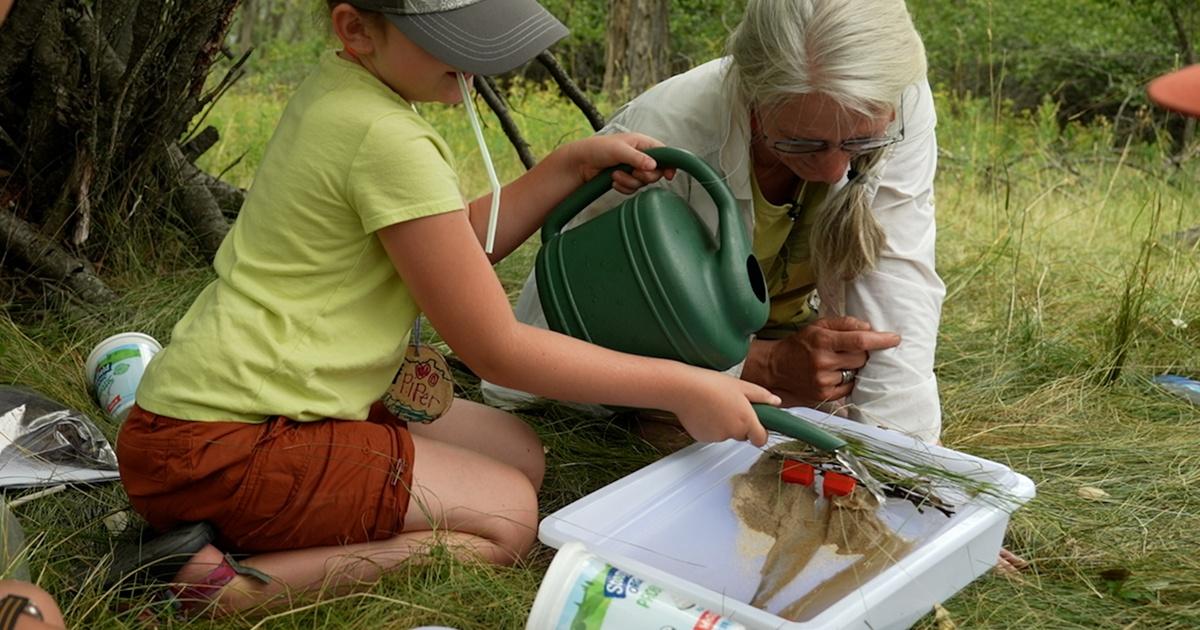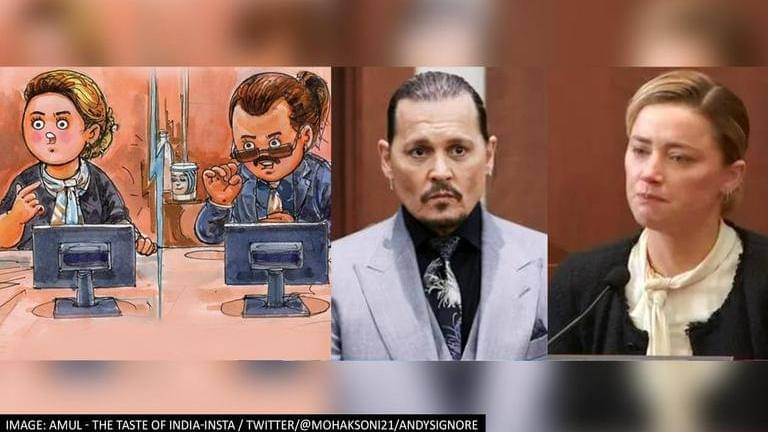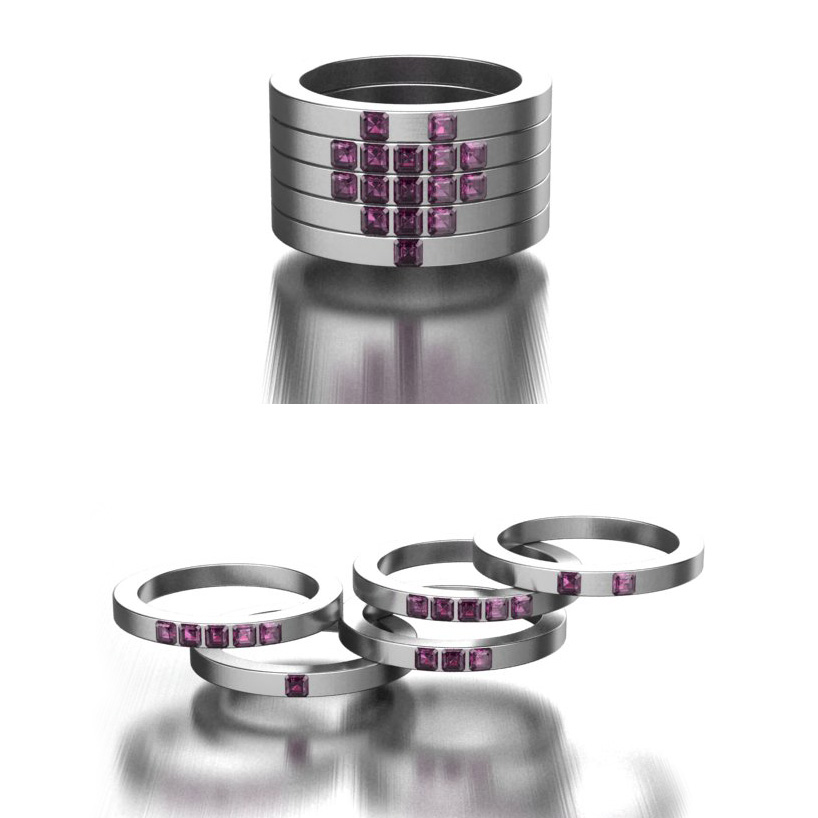
- Select a language for the TTS:
- UK English Female
- UK English Male
- US English Female
- US English Male
- Australian Female
- Australian Male
- Language selected: (auto detect) - EN
Play all audios:
(gentle music) - [Narrator] Imagine a soft drizzle is raining down. The drizzle turns to rain. (rain softly rumbles) You are in a rainstorm. Time to splash in puddles. (bright music) The
rain keeps falling, filling the streets with water. The water rushes by. What do you see in the water? A rubber ducky? Yes, and so much more. Leaves, sticks and tiny pieces of earth itself
get carried along with the water. - Water just flows and flows and flows but once in a while it even picks up dirt and it picks up rocks and it takes it. You know what that is called?
Erosion. Try it. - [Kids] Erosion. - Have you heard that before? - [Student] No. - Erosion just means when dirt and rocks are picked up by the water and taken somewhere else. - [Student]
Yeah. - Say it again, erosion. - [Kids] Erosion. - Say it in a mouse voice. - [Whole Group] Erosion. - Say it in a giant voice. - [Kids] Erosion. - Awesome. (bright music) - [Narrator]
Erosion, on this episode of "Nature WY". - [Child] Nature WY is brought to you in part by the Rocky Mountain Power Foundation. - [Breanna] Boys and girls think about water and
rivers. You've all seen a river before, right? - [Kids] Yeah. - [Breanna] What else might be in there going with that fast water? Does that water pick up anything? - [Student] Rocks. -
Rocks and? - [Student] And the dirt. - Dirt. Is there soil coming down off the top of the mountain? - [Kids] Yes. - [Breanna] Okay. - So - Like a mudslide. - Yeah, mudslides, landslides,
those are all caused by water, isn't it? That's caused by fast water or a lot of water at one time. - [Narrator] Erosion is happening all the time all around us. Sometimes, it
happens right before our eyes. Other times, it happens so slowly it's hard to see. - Has anybody seen a canyon before? - Oh yeah, I went to the Grand Canyon. - Grand Canyon's a
great example. We have a canyon just near us but there's lots of canyons in Wyoming. - [Narrator] This is Tensleep Canyon in Wyoming. How long do you think it took for the forces of
erosion to carve out this canyon? 10 years? 300 years? Let's speed up time and watch erosion happen. Not over hundreds of years, but millions of years. A canyon that looks like this
today hasn't always been this way. With the magic of a time machine, (time machine dings) let's go back in time to this exact place 70 million years ago. (time machine whirs) 70
million years ago, you wouldn't see a canyon. Instead, you'd see a lazy broad river. Let's jump forward in time to 40 million years ago and see what happens. Do you think the
forces of erosion will change the shape of of the earth? (time machine whirs) Wow. The earth did change. Erosion by the lazy broad river has carved away at the earth cutting down through the
dark brown layer to a tan layer. Let's jump forward in time to 10 million years ago. What do you think will happen next? (time machine whirs) More changes. What do you notice? Where do
you think the tan layer went? Let's jump forward in time to today. What will you see? (time machine whirs) We are back. This is what the canyon looks like today. The erosional force of
the river and the wind too have carried away the earth exposing layers that were once hidden. What once was a lazy, broad river is now a fast moving river at the bottom of a canyon. Erosion
is powerful, and over long periods of time, it can change the shape of the earth in really big ways. - Do you know what causes erosion? Causes things to go from a high point to a low point?
Usually it's wind. Can you take a deep wind breath? - [Narrator] Wind can be a powerful force of erosion, picking up small pieces of earth and blowing them away. Wind can even carve
stone. Can you become the wind? - Blow, see if you can blow some dirt away. Whoa, look how far that dirt is going. You're causing erosion. - [Student] Look at Reddy. - [Breanna] Will
you show us with your own wind power how this soil might erode away? Oh my goodness. Look at that. (gentle music) Look at all the sand moving. Do you see all that sand moving? - [Student]
Yeah. - I'm gonna ask you guys to be scientists and engineers and try to prevent wind and water erosion from happening in a town. Do you guys want water to carry away all the dirt under
your house or all this soil around your house? - [Student] No. - No, 'cause guess what's gonna happen? Your house can slide too. When I try to get this dirt, it was really easy to
pick up. Not very much is falling from it. Why? - [Student] Because the roots are holding on. - Look at all those roots. They're like little fingers holding onto that dirt. If I water
this, do you think much of the dirt is gonna come out of it and flow down to the river? - [Student] No. - [Breanna] Let's see. - Oh. - There's water. It's dripping.
There's a little bit of dirt. I'm making some mud, but did we have very much erosion from that? - No. Build my house there. - So you're saying you would rather have your
houses around something with roots that hold on? - [Narrator] Become an engineer and test the power of wind and water on a landscape model. Can you prevent erosion from happening? - Okay,
Coy, you're gonna be the wind. We've got one house, two houses, okay. Keep going, keep going. Oh no, the foundation (grunts) (Julie laughs) Coy just had his house fall all the way
down the mountain. Let's put landscaping around one. All right, we've got lots of good landscaping. All right, wind, see what happens with house number one. (Julie laughs)
Destruction. Oh, interesting. Come on, wind, give it a shot. Come on wind. Come on wind. But... - [Narrator] Just a little bit of landscaping can make a big difference and prevent erosion
from the wind. - We are like building out a shield so that the houses are okay. - [Julie] Ooh, I'm seeing some barriers. I'm seeing some ground cover. - [Student] Don't want
erosion. - Piper that worked. Look at that. That really worked. The water is being diverted around your houses. (Julie laughs) Oh, so much erosion. (bright music) - [Narrator] For a
step-by-step guide on how to create your own landscape model and explore the power of erosion, visit wyomingpbs.org/NatureWY. (bright music continues) Explore erosion in your own outdoor
spaces. Head outside when it's raining. Can you see erosion in action? Can you be the wind or the water and make erosion happen? Come along with Science Kids and us at Wyoming PBS and
see the earth change as erosion happens. Thanks for watching. (gentle music) - [Child] Nature WY is brought to you in part by the Rocky Mountain Power Foundation, the philanthropic arm of
Rocky Mountain Power supporting the growth and vitality of our community. - [Whole Group] Thank you Rocky Mountain Power Foundation.









